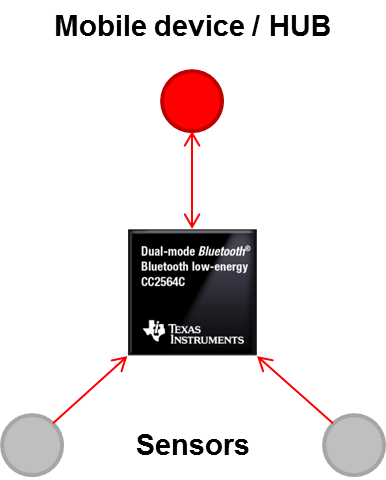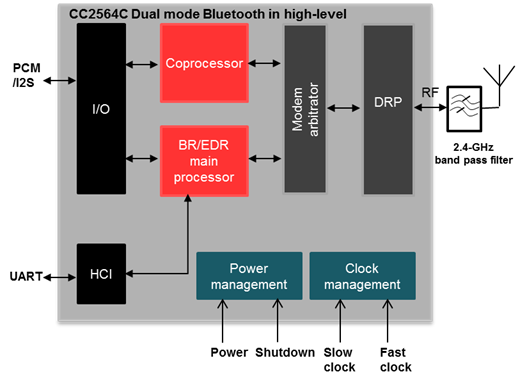SSZTAJ3 december 2016 CC2564 , CC2564C
As the Internet of Things (IoT) continues to evolve, Bluetooth® low energy technology now faces a higher volume of security threats than ever before. Given the increased reliance on wireless technology, developers must consider the types of data being shared via point-of-sale (POS) terminals, mobile POS (mPOS) exchanges, medical devices and military equipment – all of which include Bluetooth connectivity.
Simple end equipment, such as a smart home gadgets or fitness trackers, has now even become a point of interest for hackers because they can hold valuable personal information. And while Bluetooth devices running on version 4.1 and below still encrypt data, it still remains vulnerable to passive eavesdropping and man-in-the-middle (MITM) attacks during the connection process and key exchanges.
These challenges are now reduced with the new dual-mode Bluetooth CC2564C 4.2 solution. The 4.2 design features in this device include advanced Bluetooth low energy secure connection pairing. This foundation gives developers the ability to secure and simplify pairing using the Elliptic Curve Diffie-Hellman (ECDH) public key cryptography algorithm. Using the ECDH key provides much stronger security against passive eavesdropping and MIMT attacks. As a result, this feature enables developers to provide a higher level of security for connection authorization. Customers may find a royalty-free download of this feature for many MCU and MPU platforms on the TI dual-mode Bluetooth software stack website.
As more sensors connect to a single device, Bluetooth topology is inevitably becoming more intricate. Often, customers are looking for new ways to simultaneously collect data from several devices and transfer it over Bluetooth low energy to another entity like a cloud hub. While not possible in previous generations, the CC2564C solution now enables complex Bluetooth low energy topologies.
Bluetooth 4.1 link layer topology allows sensor networks to collect Bluetooth low energy data from several devices while simultaneously transferring it via Bluetooth low energy to another device. A practical use case would be aggregating health data from wearable fitness sensors via a fitness tracker, which then pushes this information to an athlete's smartphone.

As detailed in the figure above, the Bluetooth 4.1 link layer topology can connect up to 10 Bluetooth low energy or Classic Bluetooth devices, depending on their data intervals. While Classic Bluetooth was previously used to transmit data to mobile gateways, the new topology allows devices to concurrently receive (RX) and transmit (TX) signals via Bluetooth low energy. This approach consumes lower amounts of energy, while the data format and application remains the same. The complete block diagram can be found in the following diagram.

In Addition to Bluetooth Low Energy Security Features, a Number of Other Features Are Also Present in the CC2564C Solution, Including:
- Enhanced audio time synchronization supporting multi-speaker functionality
- Fully programmable digital pulse-code modulation (PCM) narrowband speech (NBS)/ wideband speech (WBS) enhancements
- Internet infrastructure access (Bluetooth 4.1 L2CAP dedicated channels)
- Enhanced voice hands-free profile (HFP) 1.6 (CSA2 spec commands)
- Adaptive frequency hopping (AFH) enhancements
- Complete Bluetooth 4.2 SIG certification for the controller, stack and profiles
Target Applications for Each Feature Are Listed below:
- Bluetooth 4.2 LE secure connections:
- Point of sale (POS)
- Mobile point of sale (mPOS)
- Medical
- Home automation
- Bluetooth 4.1 link layer topology:
- Wearables
- Asset tracking
- Sensor gateways